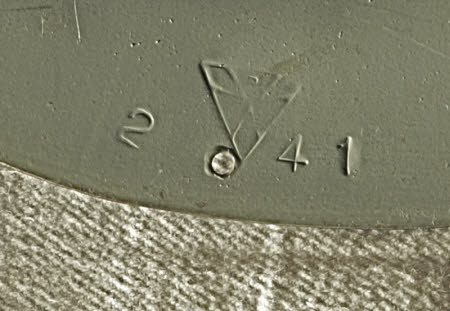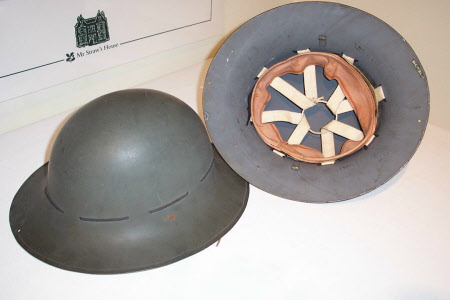Helmet
Category
Metalwork
Date
1941
Materials
Steel
Measurements
170 x 290 x 318 mm
Order this imageCollection
Mr Straw's House, Nottinghamshire
NT 741280.2
Caption
The Zuckerman helmet (officially known as Civilian Protective Helmet) was a British helmet designed for use by civil defence organisations and the general public during World War II. It was researched and designed by Solly Zuckerman, Derman Christopherson and Hugh Cairns. Zuckerman and Cairns first started looking into a design for a helmet to aid civil defence in the middle of 1940. The aim was to provide a helmet that could deal with impact from falling and flying masonry and provide more coverage for the head and neck area. After the War Office accepted their design, the Civilian Protective Helmet went into circulation in December 1940 and then throughout 1941. Helmets were made from pressed mild steel or manganese steel (known for its impact resistance) in two sizes only and sometimes marked with either M (medium) or L (large) on the inside of the brim. The design of the high dome was to allow the helmet to withstand impact and still protect the wearer. Many have two single holes opposite each other on the brim. This marking details the amount of resistance the helmet offered to ballistic impact (this being the lowest and therefore not for use as a frontline helmet). The helmet was available in a number of colours - white, black, grey and olive green.
Summary
Fire Guard Zuckerman steel helmets from World War Two
Marks and inscriptions
Underside rim.: 2 41 (between the numbers a triangle, point facing down, with P at the top.)



